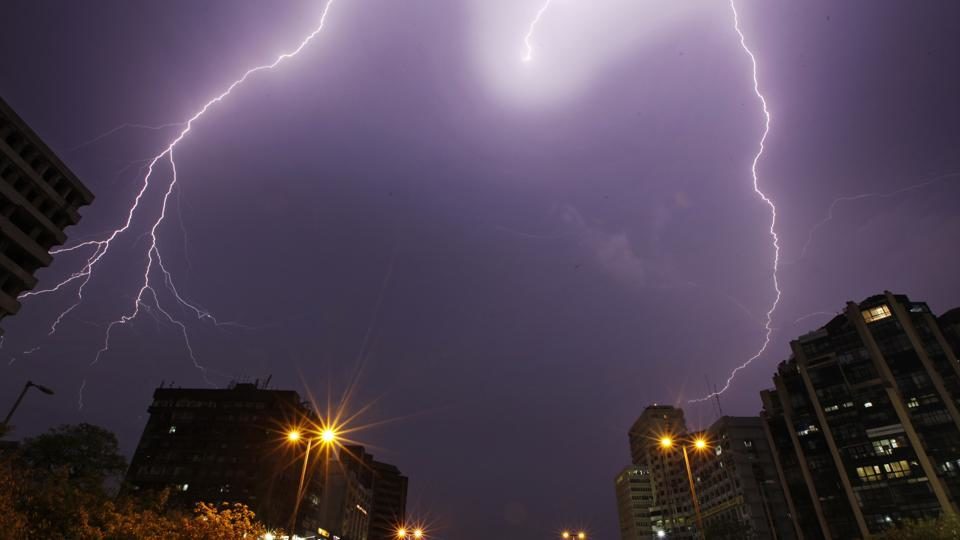
Climate change is leading to extreme weather events such as storms, rain, heatwaves and lightning are getting more frequent and more intense, causing more deaths and destruction.
However, while floods and heat waves that impact large swathes of the population attract the spotlight, lightning strikes that prove dangerous to individuals get less attention.
The average number of people who died of lightning strikes every year between 2006 and 2015 was about 50% higher than the decade before, National Crime Records Bureau (NCRB) data shows. Taking into account population growth, the average deaths from lightning strikes per million people in 2006-2015 was 26% more than in 1996-2005.
Part of the reason for the higher number is better reporting but the increasing number of lightning strikes could be playing a role, scientists from the Indian Institute of Tropical Meteorology said.
V Gopalkrishnan and his colleagues at the Indian Institute of Tropical Meteorology, Pune, examined satellite data for the period from 1990-2013, and found a 2-3% increase in lightning strikes.
Lightning deaths are more common in rural areas where the presence of open spaces and outdoor work leads to more casualties. However, higher particulate matter pollution and loss of vegetation is also making urban areas more susceptible to lightning strikes.
The researchers found that Aerial Optical Depth (AOD), which captures how much sunlight is obstructed from reaching the earth's surface by aerosols, has a positive correlation with lightning strikes. More green cover also decreases the chances of a deadly lightning strike.
"When aerosol loading increases in the atmosphere, it makes the cloud grow taller. If the vertical height of the cloud increases, there will be an increase in the charge separation or the distance between the positive and negative charge," Gopalkrishnan explained.
"The greater the charge separation, the greater the likelihood of a lightning strike," he said.
How climate change impacts lightning strikes is still not well understood. Abnormal surface-level heating that leads to the formation of deeper thunderstorm clouds, could be giving rise to more lightning strikes, the scientist said.
However, not everybody is convinced that pollution is contributing to more lightning strikes. "Deep convective clouds have greater chance of lightning events, but it depends greatly on how the clouds are developing, how the internal charging takes place," SN Tripathi, a scientist at IIT Kanpur, said.
Monitoring lacunae
Experts, however, agree that India is especially prone to lightning strikes and also fatalities, and not having a monitoring network and lack of awareness are costing lives. Barring a handful of states, there is no lighting monitoring network on the ground.
"India is a very populous country - this certainly is a factor. But another very important factor is that India is a country where a lot of people work outdoors. These people are often caught in places that provide no proper shelter for safety when storms threaten," Mark Hoekzema, chief meteorologist at Earth Networks, a US-based company that operates a global lightning detection network, said.
"Another reason is the climate of India - being in the location it is on the earth, with a lot of heat and plenty of moisture from the Indian Ocean, it is an area that gets a lot of thunderstorms," he said.
IITM, which is under the earth sciences ministry, operates a lightning location network in Maharashtra. It is planning to expand this network, but some states like Andhra Pradesh, Karnataka, West Bengal, and most recently Odisha, have already signed agreements with Earth Networks to provide lightning monitoring services.
"Spikes in the amount of in-cloud lightning are a known precursor to severe weather on the ground and can be used for severe weather prediction and alerting," Hoekzema said.
"Andhra Pradesh has become a customer of Earth Networks' data earlier this year, and is using it with the help of its state disaster response agencies operating in the field to alert people about imminent lightning strikes up to around 30 minutes beforehand."
India has only recently started to seriously study thunderstorms.
"The expert group looking at thunderstorms will also be studying lightning," Madhavan N Rajeevan, secretary, ministry of earth sciences, said.
"Lightning is a common phenomenon during thunderstorms. Deaths happen because people are not able to respond in time," Rajeevan said.



Comment: Sott Exclusive: Shocking weather! Lightning fatalities across the planet on the increase
Lightning caused more deaths than floods, landslides across India in 2015 - with 2,641 fatalities